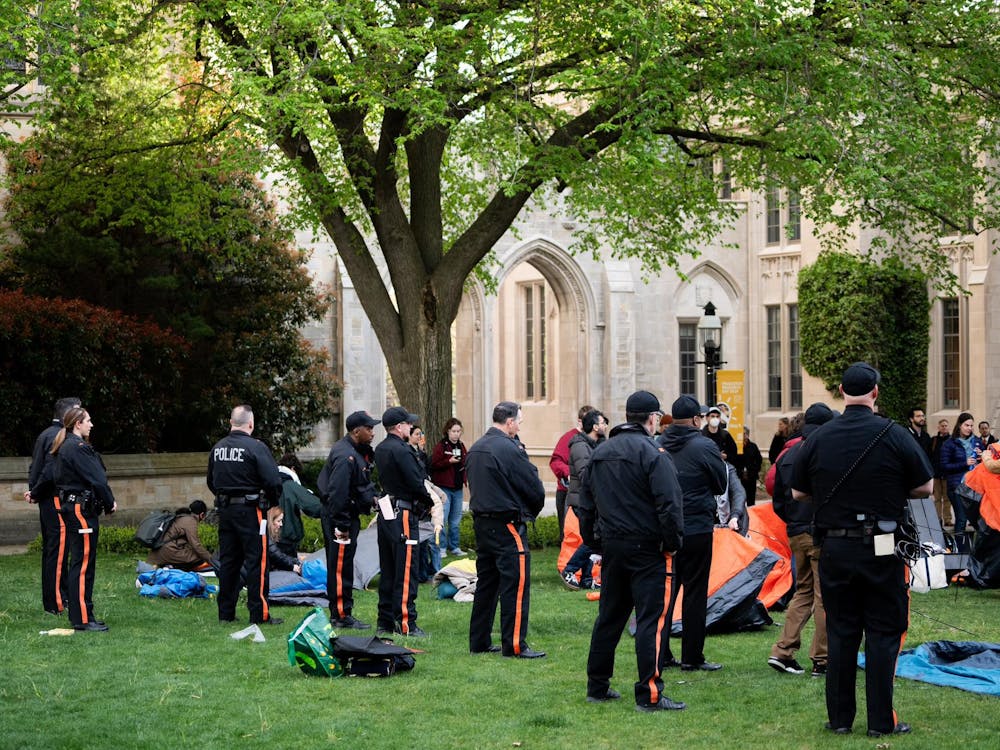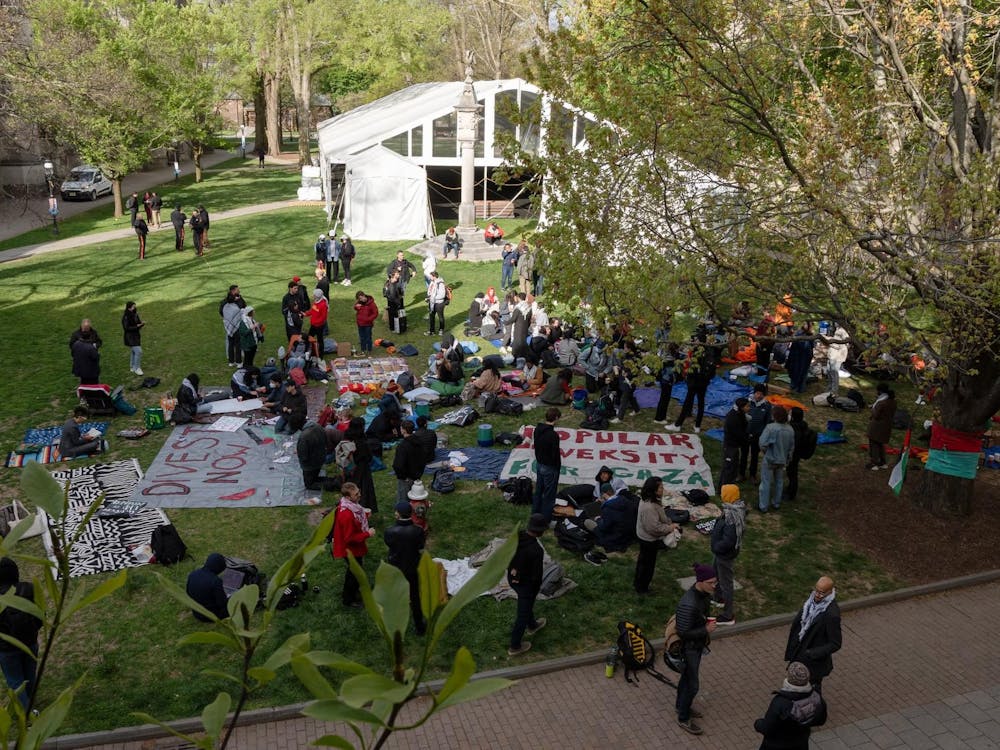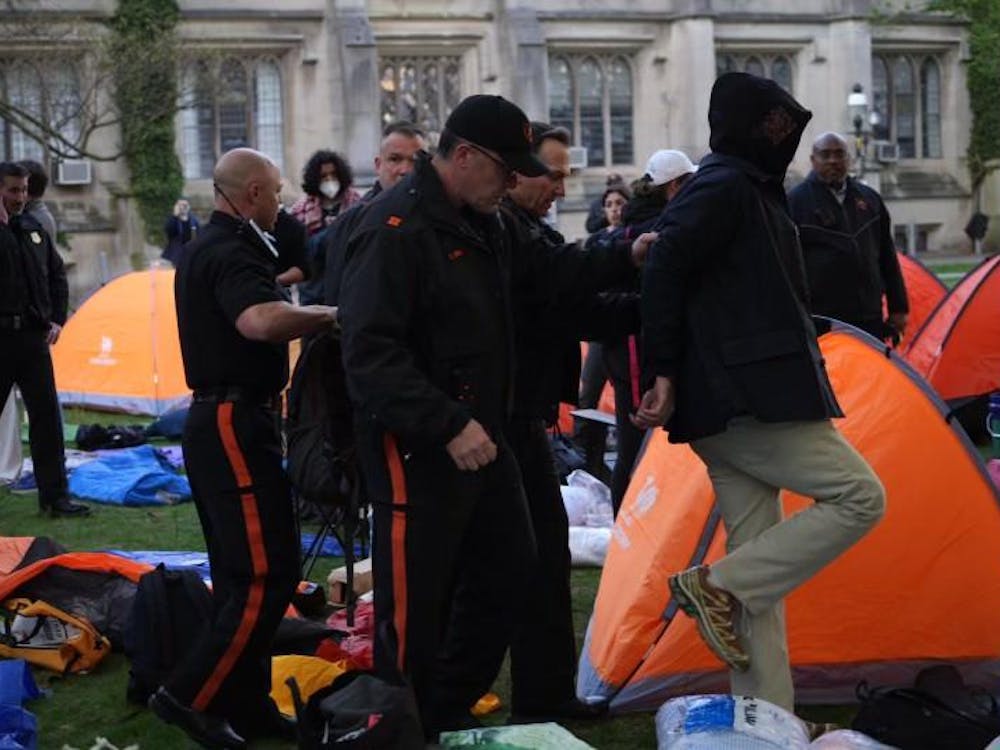Students in the second year of the HUM sequence are advised by 10 senior faculty members, all of whom not only lecture, but also precept, grade papers, and form relationships with the students.
“That’s a very rich thing to start your sophomore year with,” said Esther Schor, University professor of English and an inaugural Behrman Professor in the Council of the Humanities.
Yelena Baraz, an associate professor of classics at the University who has taught the HUM sequence since 2012, explained that the course enables students to approach the texts from both humanities and social sciences perspectives.
"I think for a lot of students it also clarifies not only what texts and ideas attract them, but also what kinds of approaches do," Baraz explained. “I do also think that the interdisciplinary aspect of it is a big advantage, where you can see a philosopher, a literary scholar, and a historian engaging with the same types of ideas in very different ways."
Baraz added that although some students don't continue the sequence in the second semester of their freshman year, it can still be a fulfilling class. For others, it's much more formative, Baraz said.
For Nicolette D’Angelo ‘19, who took the course during her freshman year, the sequence informed everything she studies at the University. Now a classics major, D'Angelo often recalls the foundation that the HUM sequence gave her.
“This is a survey course that isn’t necessarily going to give you all the answers,” D’Angelo noted, “but will ask you a lot of really important questions... and hopefully you’ll want to pursue them.”
D’Angelo has pursued these interests all the way to Greece. In addition to cultural trips to New York City and other trips throughout the sequence’s duration, students have the opportunity to apply to international trips for the year after they complete the course.
D’Angelo went to Greece in 2016 with 11 other students and Ben Morrison, Director of the University’s Program in Classical Philosophy.
D’Angelo, who had never traveled outside of the country before, enjoyed the opportunity to visit places her class had read about, while operating entirely on the University's dime. On the international trips, students were also able to pursue independent projects of their own design. D’Angelo said she studied the absence or presence of color in tragic costume.
“We have revised the image of tragedy to suit a pristine, white column,” she said. She will be presenting her findings at this spring’s Princeton Research Day on May 11.
D'Angelo's HUM studies have followed her into her other classes as well.

“If I think back two years ago, I had never heard of ‘Paradise Lost,’” D’Angelo said. She read it and loved it in HUM, and she has since read it “in some iteration every semester so far.”
D’Angelo is also part of the new mentorship program developed by Dr. Kathleen Crown, executive director of the Humanities Council, the umbrella organization under which the HUM sequence flourishes.
According to Schor, the program is constituted by “alums of the course who sponsor a variety of activities for the freshmen throughout the year: among them study breaks... [and] clinics the night before a paper is due.”
The alums of the sequence who serve as mentors are current University students themselves.
“They communicate directly with the students; they have enormous trust from the students, and I think admiration. They’re really role models for the students,” Schor said.
D’Angelo said that “no one really wanted that community to fall away after taking HUM.” The mentorship program is a way for alums to stay involved and is “an informal opportunity for people to talk about how they’re doing in the course, and how they should think about their studies after the HUM sequence.”
D’Angelo said that the HUM sequence will expand and continue to become even more interdisciplinary than it already is.
“HUM is always going to be about the books and about the conversations,” D’Angelo said. “And I hope those conversations can expand to other disciplines.”
Schor agreed, saying she is looking for a more diverse student body in the course.
“I think opening up applications has encouraged students who might have selected out, knowing there was an application, who are now emboldened to sign up and come try it,” she said.
The 2016-17 school year was the first year the sequence was open to all students who signed up, with no application required.
The coordinators of the course are looking forward to teaching more students, Baraz said, “who wouldn’t normally think of themselves as humanities students.”
Ultimately, that diversity of background and interest makes the course a richer experience for all involved. It echoes the aim of the course, as one that connects literature from across ages and continents — and now, one that connects minds from across campus as well.








